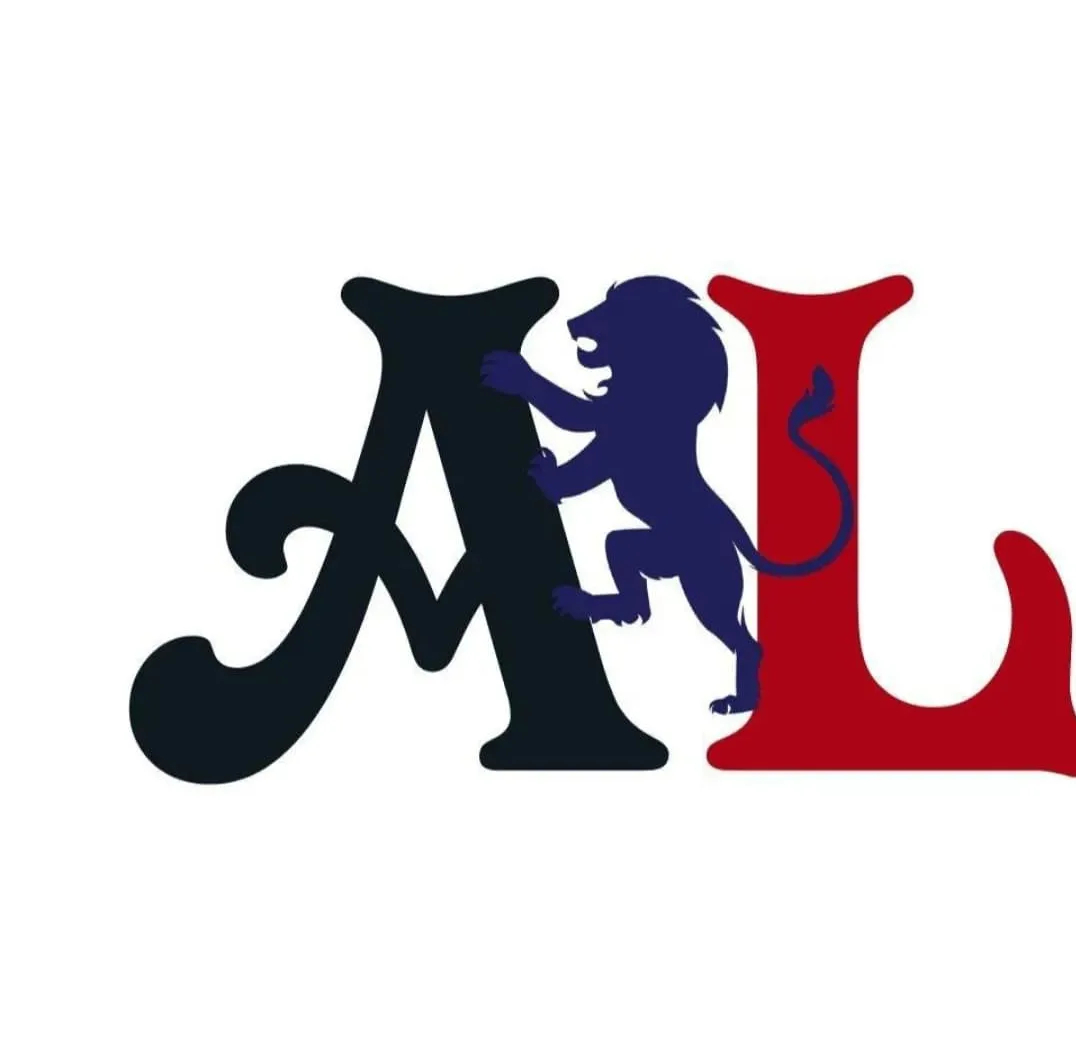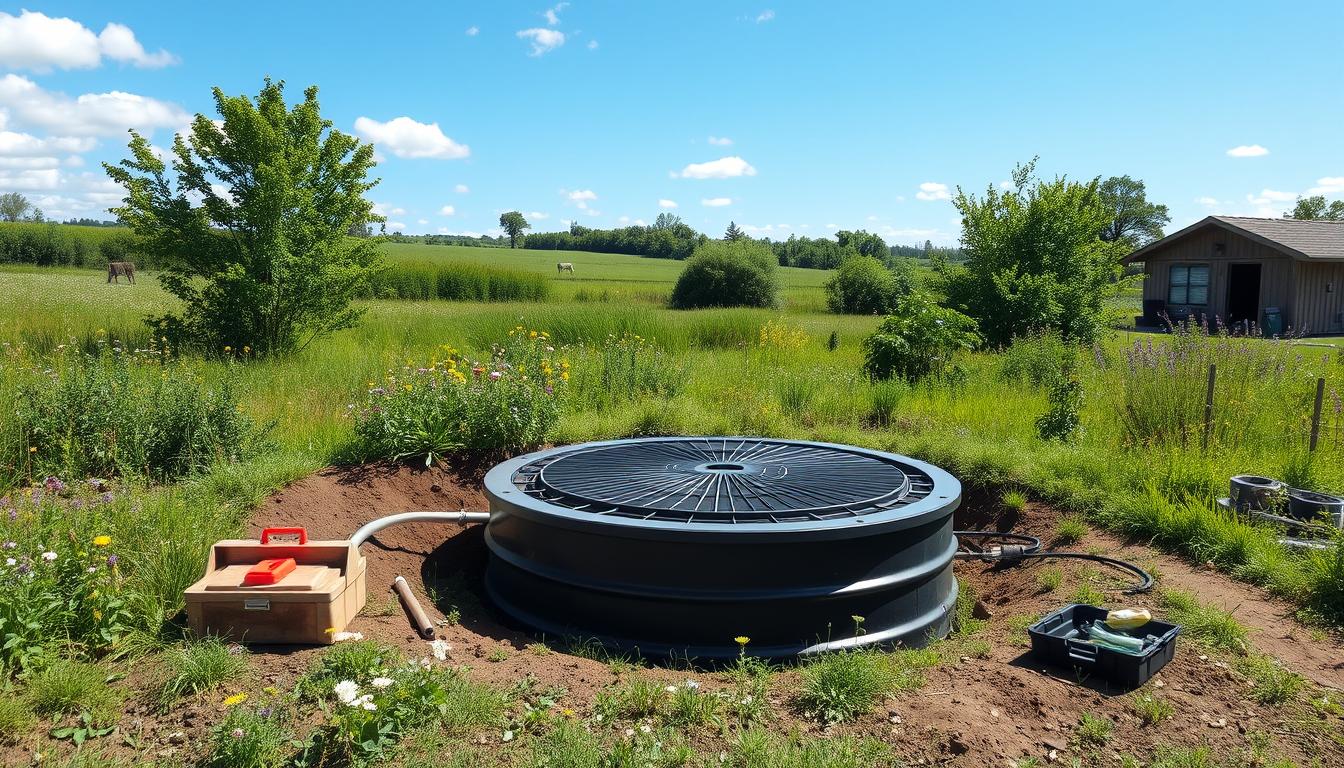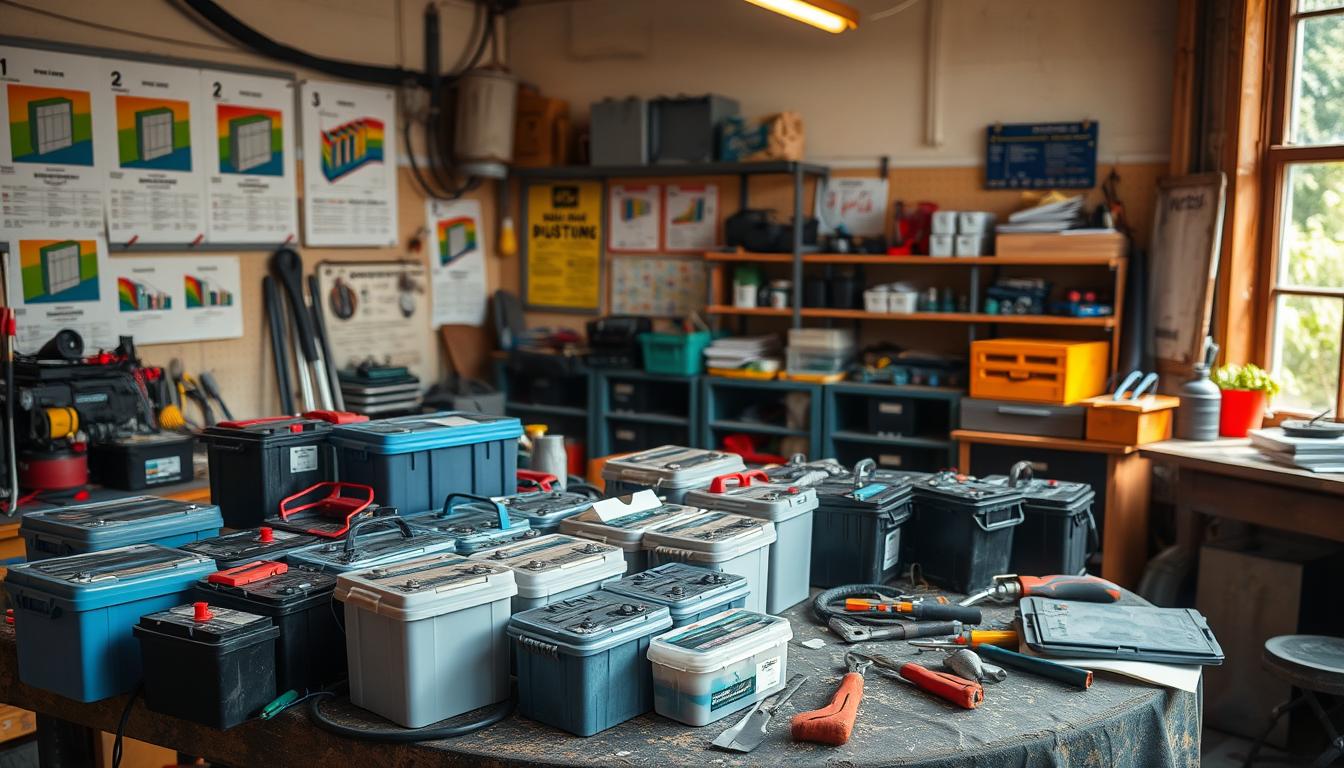Every homeowner in the UK / USA with a septic system has a silent pact with nature. This pact is about responsible care for the septic tank. It’s a commitment to keep the underground system working well.
I know how important this is. We all agree on the need for septic tank care. Our homes and the environment depend on it.
Keeping a septic system in good shape is more than just cleaning it. It’s about protecting your home and avoiding fines1. I’ve learned that being mindful of water use and getting annual checks helps a lot2.
Using water-saving devices and eco-friendly cleaning products are musts in my home1. They help me save water and keep my septic system running smoothly. Yes, there’s a permit fee, but it saves me money on sewerage charges1.
🌟 Transform Your Septic System Today! 🌟
Don’t let septic tank issues drain your wallet or ruin your peace of mind. Discover the #1 solution trusted by thousands of homeowners across the U.S. with SEPTIFIX!
🚽 Act Now! Click the link below to get your supply and experience the difference SEPTIFIX can make. Enjoy a clean, odor-free septic system and save money on costly repairs!
Your satisfaction is guaranteed, so there’s no risk! Join the happy customers who have already transformed their septic systems!
Key Takeaways
- Septic tank maintenance is a homeowner’s responsibility for the integrity of their property and environment.
- Annual inspections and regular pumping every 3-5 years are essential to prevent system failure2.
- Using water wisely and installing conservation devices protect the tank’s functionality12.
- Choosing environmentally friendly products can prolong the life of your septic system1.
- Staying informed and compliant with updated septic tank rules helps avoid fines and supports the ecosystem1.
Understanding Your Responsibilities as a Septic Tank Operator
Being the owner of a septic tank means you have big responsibilities. You need to keep the system working well and follow environmental laws. Knowing your role is key, especially when facing septic tank issues and finding solutions.
Ownership and Accountability for Septic Systems
Having a septic system means you’re in charge of its upkeep. You must also follow new rules to protect the environment. For example, since 2020, all new systems need a proper drainage field to avoid pollution3.
Regular maintenance is crucial. It includes cleaning and inspections. Not doing this can harm the environment and lead to legal trouble4. These steps help avoid problems like overflow and pollution, and they make septic tank additives work better.
Consequences of Connecting to a Mains Sewer
If your property uses the mains sewer, you have fewer responsibilities. But, if you’re off-mains, you must follow the law. The UK government says the property owner or someone responsible must take care of the system3.
Not telling the truth about your septic system when selling your property can cause big problems. It might lead to legal issues and affect your property’s value3.
It’s important to know what your septic system can do. Knowing how long it lasts helps with planning3. Also, knowing when you can get a new tank helps with planning and avoids delays3.
In short, taking care of your septic system is a big job but it’s necessary. Regular checks and following the latest rules are key to avoiding problems. Staying informed and following these guidelines helps your system work better and keeps the environment healthy.
Regulations Governing Septic Tank Discharges
Living in the UK means dealing with rules for septic tank discharges. It’s especially hard to know the difference between new and existing discharges.
🌟 Transform Your Septic System Today! 🌟
Don’t let septic tank issues drain your wallet or ruin your peace of mind. Discover the #1 solution trusted by thousands of homeowners across the U.S. with SEPTIFIX!
🚽 Act Now! Click the link below to get your supply and experience the difference SEPTIFIX can make. Enjoy a clean, odor-free septic system and save money on costly repairs!
Your satisfaction is guaranteed, so there’s no risk! Join the happy customers who have already transformed their septic systems!
Differentiating Between New and Existing Discharges
Discharges that started before January 1, 2015, and are under 2 cubic metres a day have easier rules5. But, if a discharge began after January 1, 2015, and is over 2 cubic metres daily, the rules are stricter5. Starting a new discharge after October 2, 2023, means even tighter rules, especially if it’s over 2 cubic metres a day5. Knowing these rules is key to following the right regulations for your septic system.
General Binding Rules for Septic Tanks
The UK has clear rules for septic tanks. For homes, the maximum discharge is 2 cubic metres a day5. Also, all discharges must only be from homes and not pollute water or ground5. It’s important to use the right treatment systems, like septic tanks or small sewage plants5. Before reaching groundwater, the discharge must go through a drainage field, especially in certain areas5.
These rules are checked by agencies in the UK. Not following them can lead to big fines. In Scotland, all septic tanks must be registered with SEPA6. In Wales, you must register with Natural Resources Wales, and it’s free for some6.
Keeping your septic system in good shape is crucial, no matter its age. Regular maintenance, like pumping it every year, helps it work well and lasts longer6. This care also keeps it safe for the environment.

Managing a septic system is complex. It shows why it’s so important to follow the rules to protect your property and the environment.
Essential Components of a Septic System
Knowing the parts of a septic system is key to keeping it working well. It’s important for both the system’s life and the environment. Understanding these parts helps in caring for the septic tank and keeping it reliable.
Anatomy of a Septic Tank and Drainage Field
The septic tank is the heart of the system, handling waste from your home. It separates waste into three layers: sludge, effluent, and scum. This separation is crucial before the effluent reaches the drainage field7.
The drainage field is where the effluent gets its final treatment. It filters the water naturally, keeping it clean and preventing pollution. The design and installation of this field are critical, especially in tight spaces or specific soil conditions7.
Role of Bacteria in Waste Treatment
In the septic tank, bacteria work hard to break down waste. They turn organic pollutants into harmless matter. Keeping these bacteria healthy is vital for the system’s performance7.
Effluent filters, like those in Rewatec tanks, also play a role. They catch solids that could clog the drainage field. This helps the field last longer and improves the water quality7.
Regular venting is essential to release gases from the wastewater. This keeps the system balanced and prevents bad smells7. Access ports and risers make maintenance easier, ensuring everything works right7.
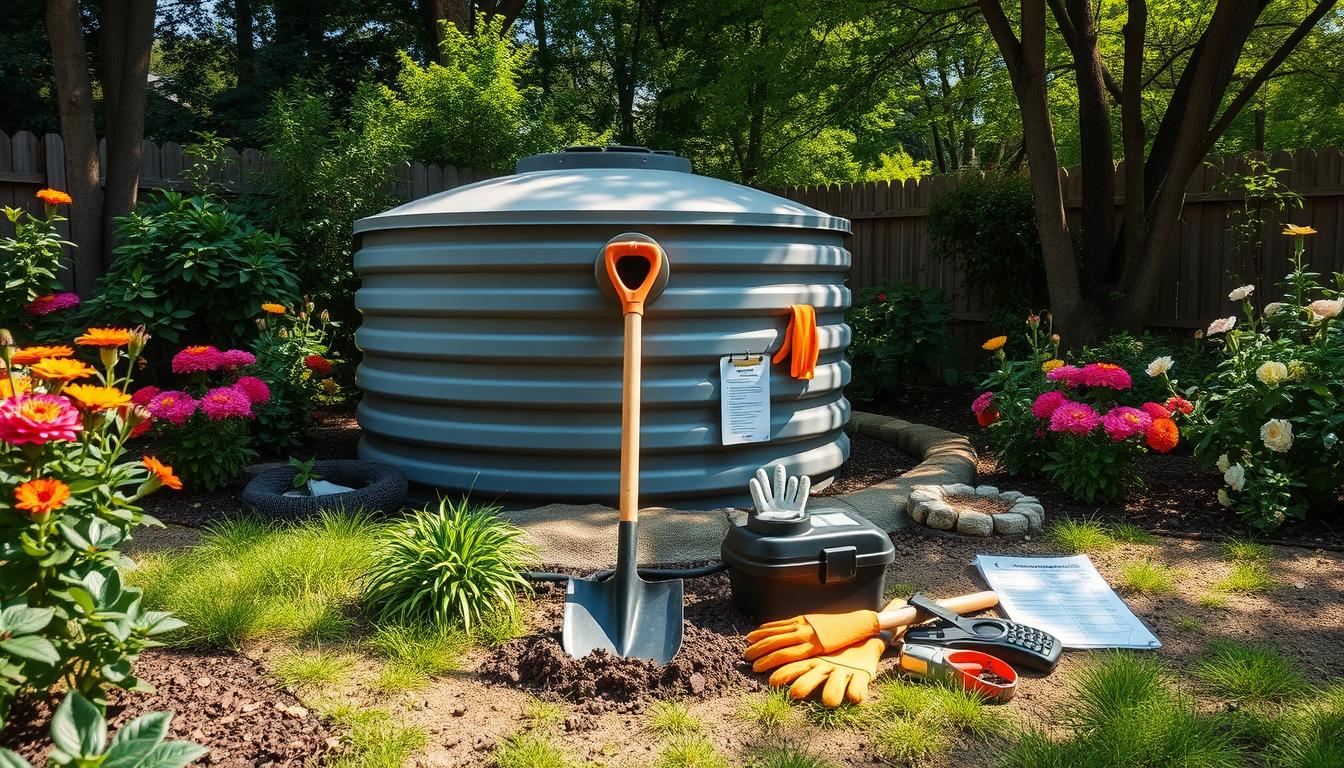
Understanding your septic system is more than following rules. It’s about protecting the environment and keeping your system running smoothly. This knowledge helps your system last longer and keeps your environment healthy.
Every part of the septic system is crucial for its success. Proper care, maintenance, and knowing about bacteria are essential. They keep your system working well for years.
Septic Tank Treatment: Best Practices for Maintenance
To keep your septic system working well, you need to clean it regularly. You also need to know how to use septic tank additives right. And, taking good care of your septic system is key.
It’s important to get your septic tank pumped out every year. This is because a septic tank can only hold about 12 months’ worth of sludge before it might damage the soakaway8. Regular pumping helps avoid blockages and keeps the system running smoothly. Also, over 35% of the water that goes into septic systems comes from toilets. This shows why saving water is so important8.
What you put into your septic system matters a lot. Things that can’t be broken down and harmful chemicals can hurt the tank’s biological processes. Also, never pour fats, oils, and grease down the drain because they can clog the tank’s soakaway9. This makes it hard for the soil to soak up liquids.
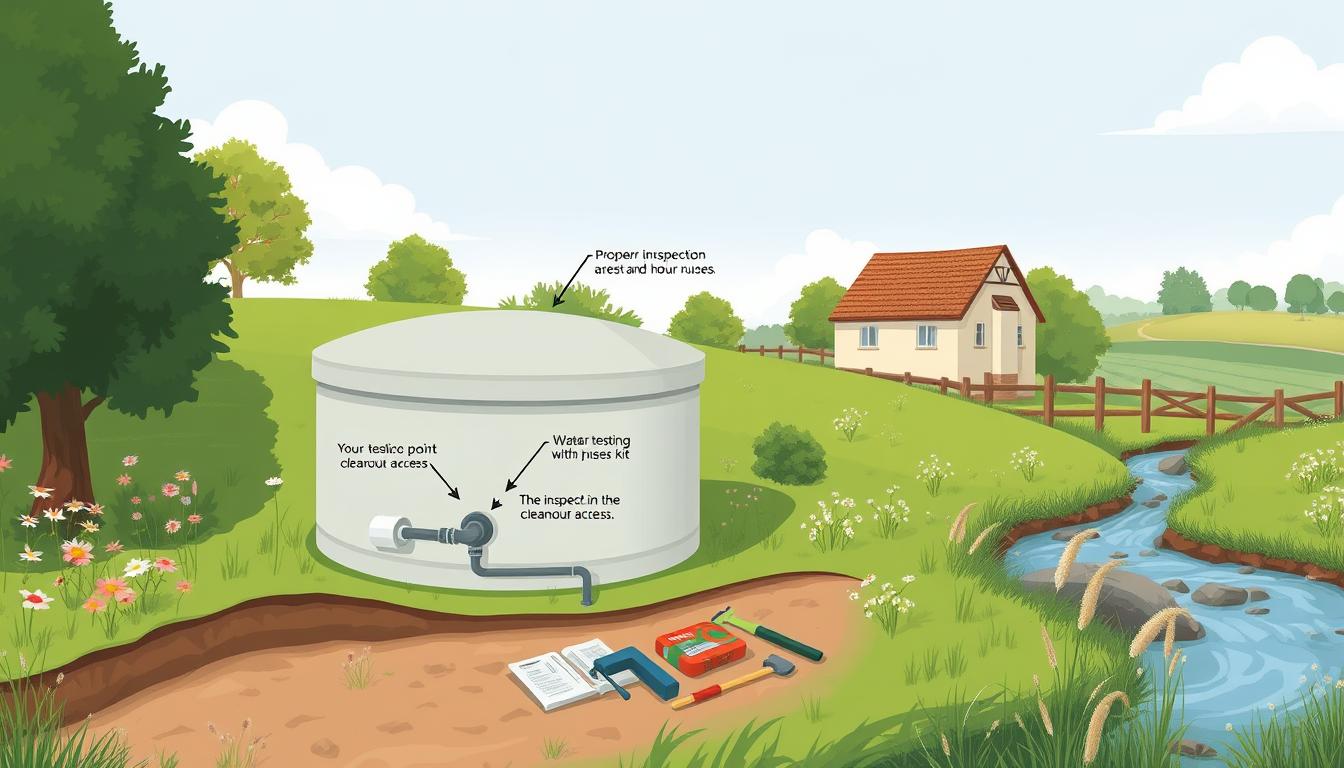
Think about where you plant trees and other landscaping. Trees should be at least 30 meters away from the soakaway to avoid damaging the septic system8. Also, only use products that are safe for septic systems. This means using water wisely and choosing dual flush toilets that you check regularly for leaks8.
Keeping records of all maintenance work is also helpful. This includes inspections, pumping, and repairs. Following these best practices can make your septic system last longer. It also helps the environment and might even increase your property’s value9.
| Maintenance Activity | Benefits | Frequency |
|---|---|---|
| Septic Tank Pumping | Prevents sludge build-up, protects soakaway | Annually8 |
| Landscaping Management | Prevents root damage, enhances absorption capacity | Monitor plant growth continuously8 |
| Usage of Septic-Safe Products | Ensures longevity of biological processes | Ongoing9 |
| Water Efficiency | Reduces overload, minimizes risk of failure | Ongoing89 |
By following these tips, homeowners can make sure their septic systems work well. This reduces the chance of unexpected problems. It also helps the environment and makes waste management more effective.
Installation Considerations and Permits
Installing a septic tank involves more than just picking a spot in your yard. You need to understand the complexities to ensure your system works well and follows local rules.
Navigating Site Evaluations and Legal Requirements
First, you must do detailed site evaluations. These check the soil, water bodies, and land shape. Since January 2015, all new systems in England must meet strict rules to protect the environment and water quality10.
Choosing the right septic tank is key. It must fit the soil’s ability to absorb water. If not, it can lead to poor treatment and harm the environment11.
The Importance of Professional Tank Placement and Connection
Getting a professional to install your septic tank is crucial. They ensure it’s placed and connected right. This avoids problems later on. The installation must follow local codes and the manufacturer’s guidelines10.
It’s also important to hire a registered waste carrier for yearly emptying. This is part of good septic tank care1011. Professional help can also lead to better, longer-lasting systems that meet environmental standards10.
Installing a septic system is a big deal for your property’s health. Talk to environmental experts and local engineers for the best solutions10.
Following local rules with your septic system protects the environment and your health. Proper installation and care can save you money and worry in the long run.
### Table: Comparison of Septic Tank and Sewage Treatment Plant Installation
| Feature | Septic Tank | Sewage Treatment Plant |
|——————————|————————————————–|———————————————–|
| Installation Cost | More cost-effective11| Higher initial investment11|
| Environmental Impact | Higher, depends on soil and maintenance11| Minimal, treats waste to higher standards11|
| Maintenance Frequency | Typically once or twice a year11| Dependent on system specs and usage |
| Electricity Requirement | None | Required11|
| Registration Requirement(UK) | Not required in England11| Required11|
Choosing the right system means thinking about these factors. This ensures your waste management is efficient, within your budget, and eco-friendly.
Environmental Considerations for Septic Tanks
Keeping septic tanks working well and safe for the environment is key. Well-designed and cared-for septic systems help the planet a lot. But, we must watch them closely to avoid problems.
🌟 Transform Your Septic System Today! 🌟
Don’t let septic tank issues drain your wallet or ruin your peace of mind. Discover the #1 solution trusted by thousands of homeowners across the U.S. with SEPTIFIX!
🚽 Act Now! Click the link below to get your supply and experience the difference SEPTIFIX can make. Enjoy a clean, odor-free septic system and save money on costly repairs!
Your satisfaction is guaranteed, so there’s no risk! Join the happy customers who have already transformed their septic systems!
The Positive Impact on Groundwater and Soil
Septic systems help recharge groundwater and improve water filtration naturally. They reduce the load on city sewers and support sustainable water use. This means better water levels and less pollution in local waters.
A good septic tank can last 20 to 50 years. This helps the environment for a long time12.
Addressing Potential Contamination and Greenhouse Gas Emissions
Septic tanks are good for the environment, but neglecting them is risky. Badly managed systems can pollute groundwater and release methane, a harmful gas. Regular pumping and upkeep are key to avoid these issues12.
Watch for signs like slow drains, gurgling pipes, or bad smells. These mean your system might be failing. Fixing problems early stops bigger pollution and health risks12.
Pumping your tank every 6-12 months helps a lot. This depends on how much you use it12.
Knowing your soil type is also important. Sandy soils might not treat wastewater well, while loam or silt soils are better. A percolation test helps find the right drainage for your soil, ensuring clean water13.
| Soil Type | Advantages | Considerations |
|---|---|---|
| Sandy | Quick filtration | Risks under-treatment of wastewater |
| Loam/Silt | Better support and filtration | Requires specific evaluation for density and composition |
| Clay | Prevents quick seepaway of water | Could lead to water logging and system failure |
Septic systems are both a benefit and a big responsibility. Proper setup, regular pumping, and ongoing care are essential. This way, we can enjoy their benefits while protecting the environment and our health1213.
Troubleshooting Common Septic Tank Problems
Many homeowners can avoid big problems by spotting early signs in their septic systems. Here’s how to diagnose and fix common issues.
Identifying and Reacting to Signs of System Failure
Understanding your septic system’s behavior is key to avoiding big problems. Look out for slow drains, gurgling pipes, or bad smells. These signs mean your tank might be full or blocked.
Regular checks and the right septic tank chemicals can keep your system running smoothly. This stops non-decomposable waste from building up14.
Also, watch out for ground movement and avoid planting trees too close. These can damage your tank and cause leaks or cracks15. Regular inspections and small repairs can make your system last longer, especially for older tanks14.
When to Seek Professional Help for Septic System Issues
If DIY and regular checks don’t fix your septic system, it’s time to call a pro. Experts can provide detailed solutions, including deep cleans and repairs. They can handle big problems like collapsed baffles or dislodged dip pipes15.
Experts also make sure your system meets local rules. They use products like Tricel Novo Sewage Treatment Plants, which meet EN12566 standards16. Their knowledge helps fix current problems and plan for the future.
Whether you fix septic tank problems yourself or get a specialist, knowing when to act is key. By learning about septic tank care and knowing when to call for help, you protect your home from septic failures.
Selecting the Right Septic Tank for Your Home
Choosing the right septic tank is key for good care and maintenance. You need to think about your property’s size, how many people live there, and how many bathrooms you have. This helps pick the best system for your home.
🌟 Transform Your Septic System Today! 🌟
Don’t let septic tank issues drain your wallet or ruin your peace of mind. Discover the #1 solution trusted by thousands of homeowners across the U.S. with SEPTIFIX!
🚽 Act Now! Click the link below to get your supply and experience the difference SEPTIFIX can make. Enjoy a clean, odor-free septic system and save money on costly repairs!
Your satisfaction is guaranteed, so there’s no risk! Join the happy customers who have already transformed their septic systems!
The Varieties of Septic Tanks and Their Features
Septic tanks come in different materials, each with its own benefits. Concrete tanks last a long time and are very durable. Polyethylene tanks are light and don’t rust, making them easy to install and keep up.
Fiberglass tanks also don’t rust and are strong and durable. They are a good choice for many homes.
Capacity Planning Based on Household Size
Choosing the right size tank is very important. For a small UK home with 1-2 bedrooms, a tank of 2,700-3,400 litres is enough17. But, a bigger home with 3-4 bedrooms might need a tank of 3,800-5,700 litres or more to handle more water17.
The size of your household affects your septic system’s needs. A single house with up to three bedrooms needs a tank for 5 people18. A four-bedroom home needs a system for 6 people, and a five-bedroom home for 718.
It’s important to make sure your tank can handle your home’s water use. This includes any extra water from guests or seasonal use in holiday homes18.
Think about if your household will grow or if you’ll use more water in the future. If you plan to add more bathrooms or residents, choose a system that can handle it. This helps avoid problems with your septic tank.
| Bedrooms in Home | Required Capacity (litres) | Calculated Population |
|---|---|---|
| 1-2 | 2,700-3,400 | 5 |
| 3-4 | 3,800-5,700 | 6 |
| 5+ | 5,700+ | 7+ |
Remember, following local UK rules is also important when choosing your septic system size. Some areas have special rules based on soil type and environmental concerns17. Talking to septic tank experts can give you advice that fits your property and local rules.
In short, picking the right septic tank size and type is key for good care. This step ensures your system works well and lasts longer, keeping your home running smoothly.
Conclusion
Homeowners in the UK need to understand the importance of septic tank systems. These systems are crucial for managing waste in rural areas without public sewers. They also affect the environment and our finances.
As more people use wastewater treatment plants, knowing about septic tanks is key. Although they don’t filter out all contaminants, they are cheaper than public sewers. The UK is moving towards greener solutions, making old tanks better and saving money1920.
Keeping septic tanks clean and well-maintained is essential. Regular cleaning and using the right additives help the system work well and last longer20. Neglecting these tasks can harm our health and the environment, and even lead to legal issues19.
Septic systems are vital for living sustainably in rural areas. They need a lot of space and sometimes cost a lot upfront. But, they can serve homes for decades if taken care of19.
With this guide, UK homeowners can manage their septic systems well. This ensures a home that meets its residents’ needs while respecting nature’s balance20.
🌟 Transform Your Septic System Today! 🌟
Don’t let septic tank issues drain your wallet or ruin your peace of mind. Discover the #1 solution trusted by thousands of homeowners across the U.S. with SEPTIFIX!
🚽 Act Now! Click the link below to get your supply and experience the difference SEPTIFIX can make. Enjoy a clean, odor-free septic system and save money on costly repairs!
Your satisfaction is guaranteed, so there’s no risk! Join the happy customers who have already transformed their septic systems!
FAQ
What are my responsibilities as a UK homeowner in terms of septic tank treatment?
What are the consequences if my septic system connects to a mains sewer?
How do I know if my septic tank discharge is new or existing, and why does it matter?
What are the General Binding Rules for septic tanks in the UK?
Can you explain the anatomy of a septic tank and drainage field?
What role do bacteria play in a septic system?
What are some best practices for maintaining my septic system?
What should I expect during a septic tank installation?
How do septic tanks impact the environment?
What are the signs of a septic tank problem, and how should I react?
How do I choose the right septic tank for my home?
Source Links
- Homeowners Guide to Cesspits and Septic Tanks – https://www.lanesdrainageservices.co.uk/news-and-advice/homeowners-guide-to-cesspits-and-septic-tanks
- Homeowners responsibilities for homes with Septic Tanks – https://www.trentsdrains.co.uk/guide-to-homeowners-post-purchase-responsibilities-for-houses-with-septic-tanks/
- Septic Tanks: Frequently Asked Questions – https://www.jdpipes.co.uk/knowledge/sewage-treatment/septic-tank-frequently-asked-questions.html
- Guide to Cesspits & Septic Tanks | Metro Rod – https://www.metrorod.co.uk/help-and-advice/blogs/septic-tanks-vs-sewage-treatment-plants/
- General binding rules: small sewage discharge to the ground – https://www.gov.uk/guidance/general-binding-rules-small-sewage-discharge-to-the-ground
- Septic Tank Regulations | The Complete Guide – https://www.tanks-direct.co.uk/septic-tank-regulations
- What is a septic tank? How does it work? – https://www.premiertechaqua.com/en-gb/wastewater/what-is-a-septic-tank-and-how-does-it-work
- How to operate and maintain a septic tank system – https://www.jdpipes.co.uk/knowledge/sewage-treatment/how-to-operate-maintain-a-septic-tank.html
- Septic Tank Care – The Do’s & Don’ts – https://www.csg.co.uk/blog/the-dos-donts-of-septic-tank-care
- Pdf document – https://consult.defra.gov.uk/water/reform-regulatory-system-small-sewage-discharges/results/your-sewage-your-environment-leaflet-july-2015.pdf
- Replacing a Septic Tank with a Sewage Treatment Plant – Blockbusters – https://www.blockbusters.co.uk/blog/replacing-a-septic-tank/
- Everything You Need to Know About a Septic Tank | GRAF UK – https://www.grafuk.co.uk/the-ultimate-guide-to-septic-tanks-everything-you-need-to-know/
- Environmental Considerations for Septic Tanks: Exploring Infiltration Chambers and Aeration Tiles – https://calcamite.co.za/blog/environmental-considerations-for-septic-tanks-exploring-infiltration-chambers-and-aeration-tiles/
- 11 Common Septic Tank Problems & How To Fix Them | D-tox – https://www.dtox.org/blog/common-septic-tank-problems
- Common Septic Tank Issues | Septic Tank Repairs – https://www.draindoctor.co.uk/about-us/hints-and-tips/item/common-septic-tank-problems-how-to-fix-them
- How to Fix Septic Tank Problems – Tips by Tricel UK – https://tricel.co.uk/sewage-treatment/how-to-fix-septic-tank-problems/
- Choosing The Right Septic Tank – https://cotswolddrainage.co.uk/news/septic-tanks-and-sewage-treatment-plants-choosing-the-right-size-for-your-uk-home
- How to size a Septic Tank or Sewage Treatment Plant – https://www.jdpipes.co.uk/knowledge/sewage-treatment/sizing-septic-tank-sewage-treatment-plant.html
- Pros and Cons of a Septic Tank System – https://dcmerrett.co.uk/pros-and-cons-of-a-septic-tank-system/
- Why Replace a Septic Tank? | Burrow Environmental – https://www.burrow-environmental.com/why-replace-a-septic-tank/
